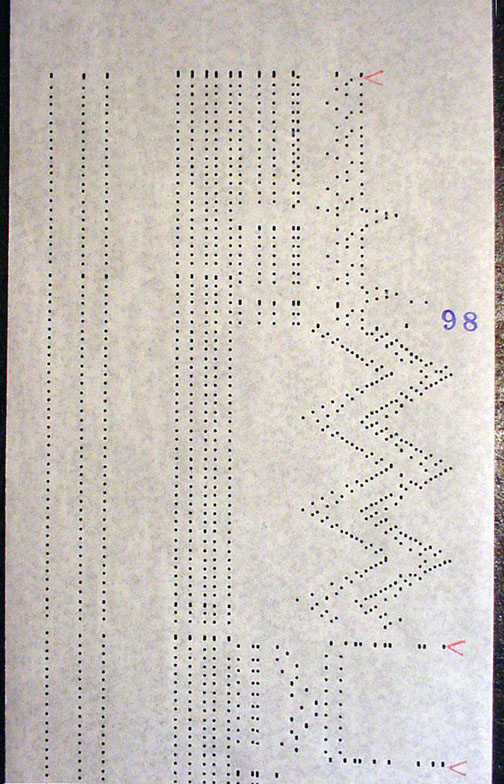
Here's another reason to select an Interpretive Arrangement over the formula-made rolls of the past ... doubly so when the manufacturer seems to be unable to maintain the linear standards which, in turn, create havoc with the metronome! Graduated striking translates into virtuoso performance excitement.
Roll III has 'blank places' in it, one of which is just about to occur at the top of the photograph. This is the "calm before the storm" when, at the Coda, the boundaries fade away -- and the Pianola launches the longest, loudest and most outrageous multi-rhythm tremelo chord one could ever imagine. Ford's Model T automobile and spring-wound Victrola talking machines might not amaze us now, but when BALLET MECANIQUE wraps up the final roll "all hell breaks loose". That George Antheil can continue to shock us with a Pianola composition, in the Space Age, is nothing short of amazing. It's absolutely astounding!
You don't experience this tension with the many orchestra revisions, since most editions manage to keep some kind of "noise" going, which ruins the toungue-in-check drama that is inherent in this Avant Garde composition. (Drum rolls, fire sirens, klaxon horns and other distractions eliminate the "teaser" effect of music spaced between total silence, save the sound of the paper traveling in the spoolbox!) You just know that something MAJOR is going to happen, and it does!

And now, we are rewarding(?) you with a sample page of the handwritten manuscript which George Antheil provided for the original Pleyel score, featuring many revisions ... including 2 sets of final measures which vary by only a single note. (Pleyel's arrangers must have really been confused, so they eliminated that important piano key entirely, which — if you expect it — is glaring in its absence!
All this will become crystal clear when you view the last and final page in this series on the BALLET MECANIQUE rolls --
[Continue to the last photograph] [Return to the previous page]